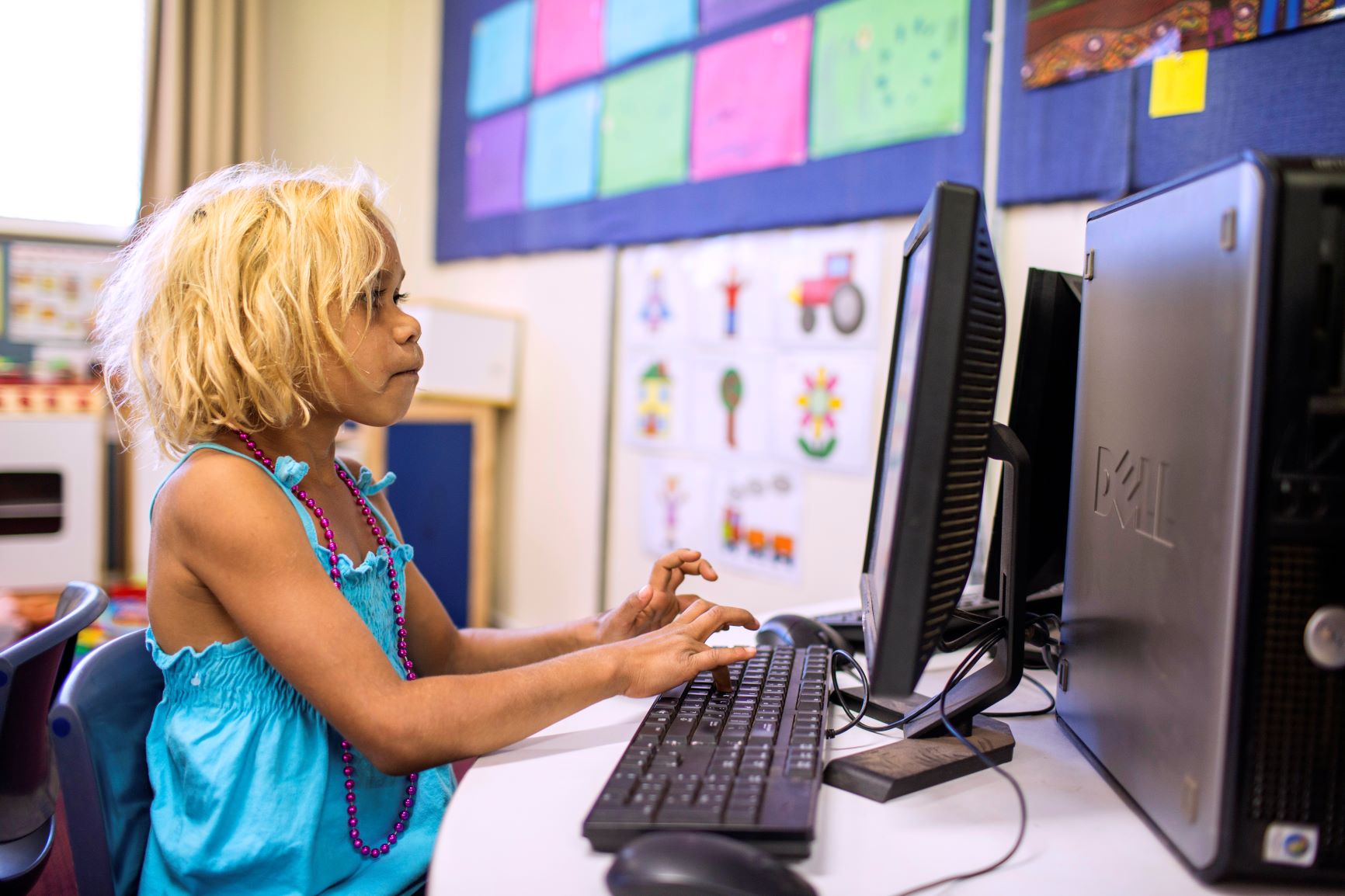
- Almost one in four First Nations households has no internet access
- First Nations students four times more likely to have no internet at home
- Closing the Digital Divide should be part of Closing the Gap targets
First Nations households are suffering a yawning "Digital Divide" with the rest of Australia, with a new report released on Closing the Gap Day showing one in four First Nations households has no internet access, limiting learning opportunities for Indigenous students.
COVID-19 widened this gap over the last year, with school closures meaning that many First Nations students could not access the learning materials, teaching and support that their class peers could access online, the report finds.
The report, by leading child-focussed organisation World Vision Australia in partnership with the Australian Literacy and Numeracy Foundation (ALNF), also found that First Nations homes relied more heavily on costly, inefficient mobile data for internet access (37 per cent) compared with the general population (21 per cent). As a result, First Nations households are spending a greater slice of their household income on internet access than non-First Nations families.
And in terms of both digital access and affordability, the report, Connecting on Country: Closing The Digital Divide For First Nations Students In The Age of COVID-19, found the gaps between First Nations and non-First Nations families were only getting wider.
Report author and World Vision's First Nations policy advisor Dr Scott Winch said the findings confirmed the educational disadvantage for First Nations students fuelled by poorer digital access – a problem that had only grown worse during the COVID-induced school closures.
"There has been a great disparity in online education access for First Nations students for a long time," Dr Winch said. "Educational outcomes for Indigenous students are already lagging the broader population, with only Year 9 numeracy on track in most states, and Indigenous children are twice as likely to be developmentally vulnerable.
"COVID-19 has accelerated reliance on the internet across almost every area of life, including in education, which makes it more important than ever to urgently close the Digital Divide for First Nations students. Every First Nations child should have the opportunity to learn and continue their education online."
In the report, World Vision and the ALNF call on the Federal Government and the private sector to lead efforts to close the Digital Divide with five key actions:
- Develop a federal First Nations Digital Inclusion Strategy, in consultation with First Nations communities and Aboriginal education consultative groups, to ensure all First Nations students have access to the digital tools and resources they need
- Prioritise First Nations communities in the rollout of the Mobile Black Spot Program to improve mobile phone coverage in remote Australia
- Consider including a dedicated target on Closing the Digital Divide in the Closing the Gap agreement
- Explore public-private partnerships and encourage telcos and equipment providers to play their part to close the Digital Divide by increasing affordability and access of going online for First Nations students
- Fund research into the impact of the Digital Divide on the education of First Nations students to inform further policy solutions and resourcing decisions
Dr Winch said closing the Digital Divide was a shared responsibility, with the Government and private sector playing a role. This was particularly the case for remote communities which have much larger disparities for First Nations Families than other regions, largely due to geographic isolation, lack of infrastructure, socioeconomic disadvantage and lower literacy and English levels.
"Addressing the Digital Divide should not be a question of 'if' but 'how fast'," Dr Winch said. "In 2021, online access and digital inclusion are a necessity for all Australian students, not a luxury. It's imperative that First Nations students can access the same resources and education opportunities as other Australian students who take access to equipment and internet connections for granted."
Professor Tom Calma AO, co-chair of the ALNF, supports the report's recommendations and reinforced that "advancements in technology and digital distribution of reading and learning resources are welcomed, but when not backed up with a comprehensive implementation strategy to close the Digital Divide, the gap in Indigenous educational equality will widen".
"Digital delivery and access are key determinants of both education and health and non-access is significantly and detrimentally impacting on Aboriginal and Torres Strait Islander peoples - irrespective of where they live."






